
Rights Reserved - Free Access.
This digital object is protected by copyright and/or related rights. This digital object is accessible without charge, but its use is subject to written permission.
Unless expressly stated otherwise in the licensing conditions, you are free to make any of the acts permitted by your national copyright and related rights act, including browsing, printing and making a copy for your own personal purposes.
All other acts of reproduction and communication to the public are subject to the licensing conditions attached to the digital object.
ARMY BOOTS OF THE WORLD. REVIEWS
Important notice: we do not sell any boots! The prices are given for information purposes only!
Argentina ![]()
Argentinean Military Boots of the Falklands War Times (1982)
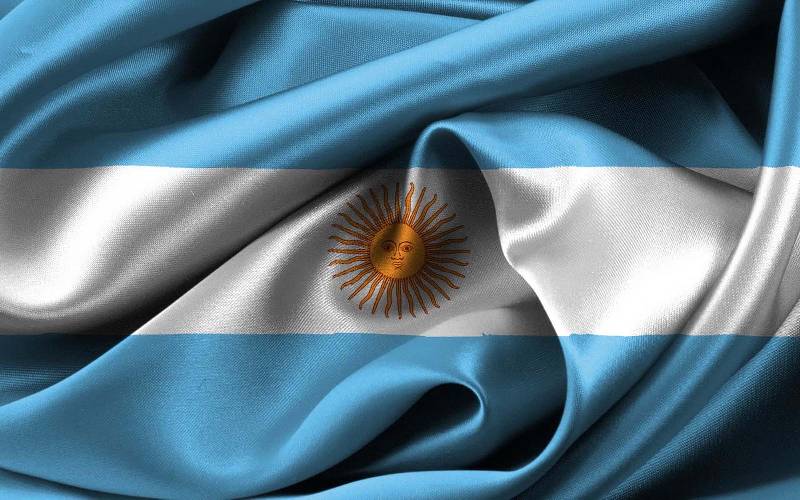
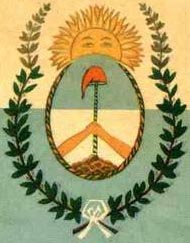
Argentine Republic got its name from the Latin word "Argentum" ("silver"). This is the largest Spanish-speaking country, not only in South America, but also around the world. In South America Argentine is second in size. Only the Portuguese-speaking Brazil is larger in territory. Argentine borders with Uruguay, Brazil, Paraguay, Bolivia and Chile. Argentine has a wide variety of climates and natural conditions, this country can be divided into four climatic zones: subtropical valleys in the North, the Pampas in the East and in the Center, Patagonia and Tierra del Fuego in the South, and the Andes Mountains to the West.
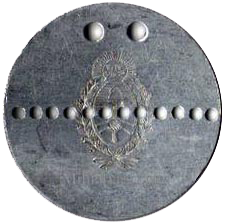
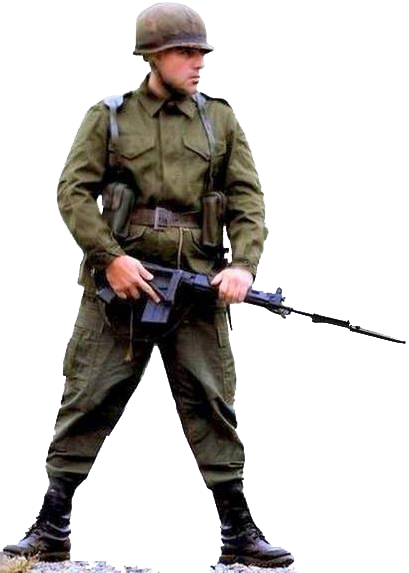
Accordingly, the Armed Forces of Argentine ("Fuerzas Armadas de la Republica Argentina" in Spanish), must be prepared to operate in all the climates and very different weather conditions. The Armed Forces of Argentine consist of three components: the Army, the Navy and the Air Force. The Argentinian General Staff ("Estado Mayor Conjunto de las Fuerzas Armadas" in Spanish, or simply "EMC") officially declares the coordination and cooperation of all the military branches as its main goal.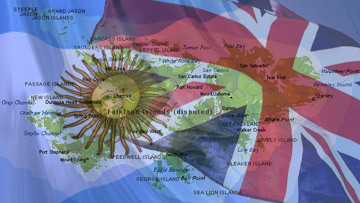
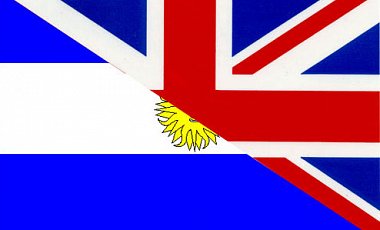
The first combat clashes for the control of the Falklands/Malvinas Islands between Argentine and the British forces took place in April 1982. The Argentines prefer to use the name "Las Malvinas", given by the French in 1694 in honour of Saint Malo, the home town of the discoverers. However, officially it were the British, who discovered these islands, and even 4 years earlier than the French. In spite of this, immediately after obtaining the independence, the Argentines began to consider that the island must belong to them. A particular outrage among the Argentines caused the establishment of control over the islands by the British Empire in 1833, and since that time the British were considered aggressors and invaders in Argentine.
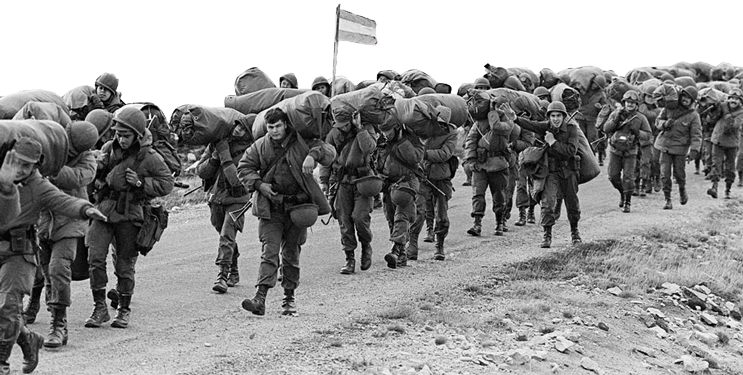
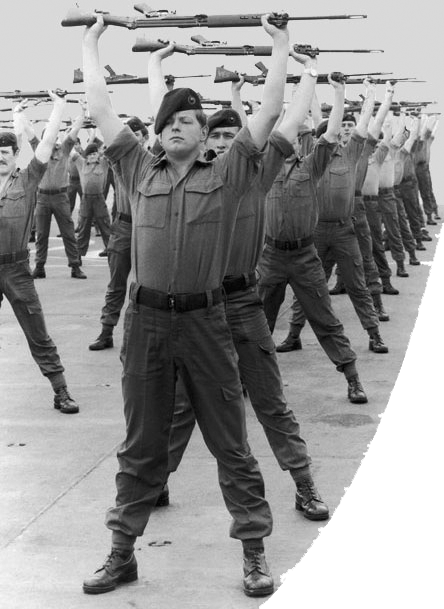
The history of this conflict are well described in many studies, but it is worth mentioning that both sides of the conflict haven't formally declared the war on the opponent, having considering the events either "regaining control over our own islands" and "defence of our traditional territories" correspondingly. The time of the conflict in the southern hemisphere (April-June) corresponds to the end of autumn - early winter in our latitudes. The British veterans of the Falklands War, the sailors and Marines with whom I had an occasion to talk about, almost unanimously remembered the harsh weather conditions - "It was f***ing cold !...".
In its traditional opposition to the British, Argentine has always tried to follow the example of the European (later American) military practice. For a long time, especially in 1930-1943, in military matters this South American country was oriented on the Third Reich.
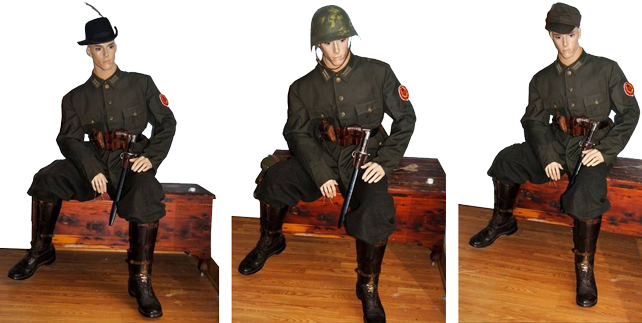
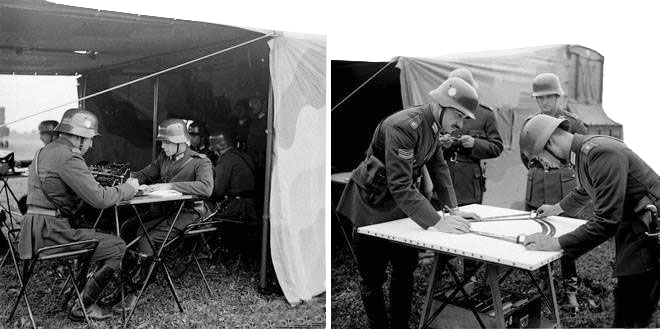
Just as its neighbouring Chile, has possessed of strong German influence and considerable German diaspora, the Argentine army, even introduced the German-type uniform and helmet of the model 1935 with minor modifications. If to look at the photos of Argentine military, the very first strong impression is that we see the soldiers of the German Wehrmacht. The Argentines even adopted the classical German stand in formation.
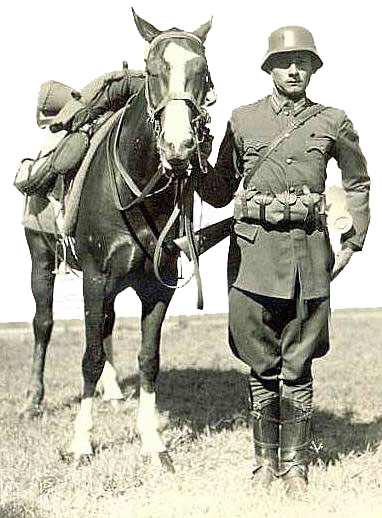
After the First World War in many countries of South America, especially in Chile and Argentina, there were many former Kaiser's army officers, who did not find themselves in the civilian life, especially in the post-war devastation, which was extremely burdened by unwisely harsh conditions, imposed by the winners. This situation was used by South American countries, which were trying to attract the former German military experts, who had serious combat experience, especially when the relationships between the countries of the region have become increasingly difficult, coming to combat skirmishes (and even wars!) from time to time. For example, Ernst Röhm, ex-captain of the Reichswehr and acting Chief of Staff of the German SA storm-troopers, spent some time in South America as the Bolivian army instructor.
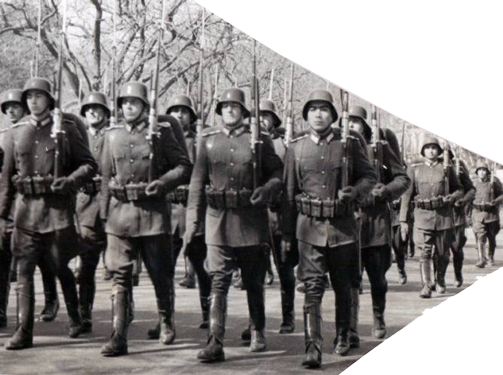
The cut of the Argentine military uniform shows clearly the influence of some other European countries. In particular, the military medics have used the Swiss-type steel helmets of model M18/63.
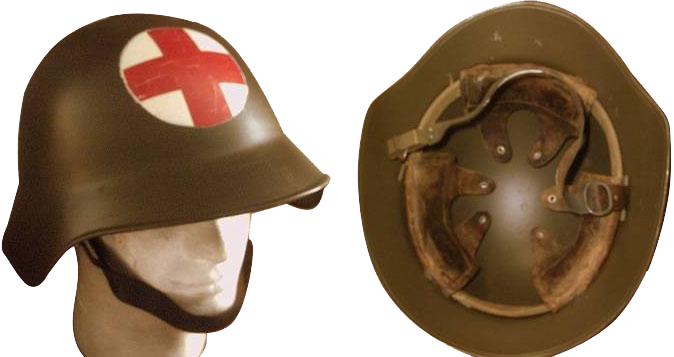
The European influence (Swiss, German and Italian) can also be seen in the Argentinian mountain boots, which actually were just the copies of specialized mountaineering footwear of these Alpine countries. This is not surprising, because many of the military officials who make decisions on the uniform and equipment, had studied and trained in Europe, so they had a chance choose the best and most successful, in their opinion, examples. Even Juan Per ón, the famous Argentinian president and dictator (who ruled the country in the years 1946-1955 and 1973-1974), was an Argentinian military attache in the Fascist Italy.
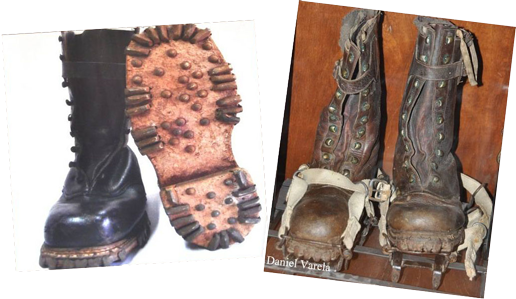
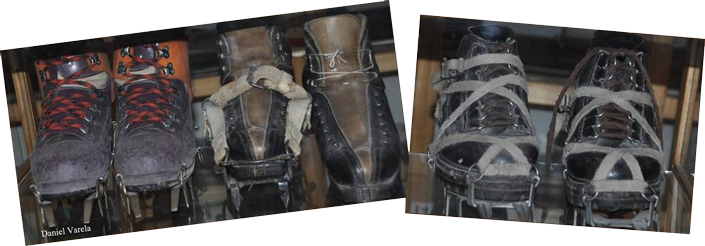
From February 1939 to May 1940, Juan Per ón, who had the rank of colonel at that time, took training in Alpine troops of the Italian army. Then he visited the Third Reich, being interested in the secret of Hitler's military successes. The identity of Perón was undoubtedly influenced by his studies of social policy of the Italian fascists and of armed forces organization in the Nazis Germany. Later Perón tried to implement the lessons learned to restore the strict order, which, in his opinion, Argentina needed most of all.
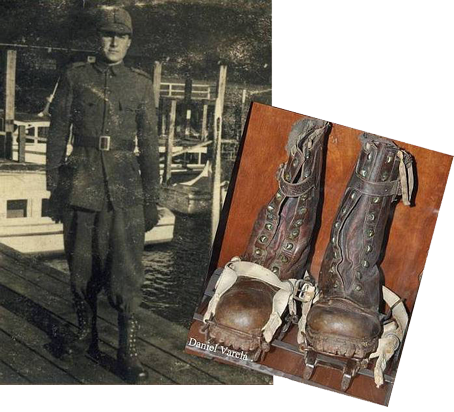
The European influence can be seen in the other elements of uniforms and equipment. It is worth mentioning that, like many other armed forces of the post-war Western Europe (e.g. Norway, Greece, Italy etc.), from the mid 1950s to the mid-1960s the Argentine paratroopers wore British style short jackets type R-40.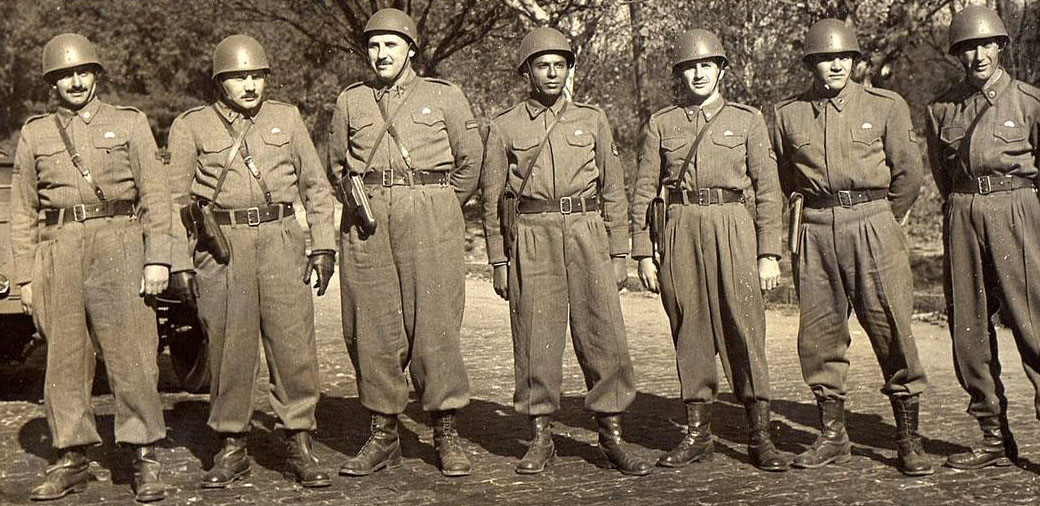
This jacket, more known as the "Austerity pattern jacket", i.e. the jacket of "ascetic" or "economical" cut, was used in the Armed Forces and the National Gendarmerie of Argentine prior to the adoption of the Argentine version of the famous olive-green M65 US Army jacket.
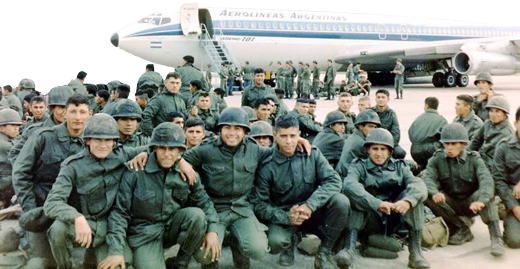
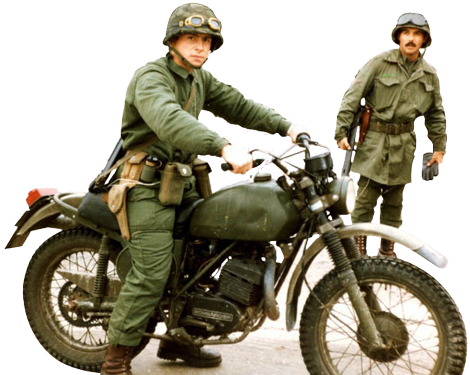
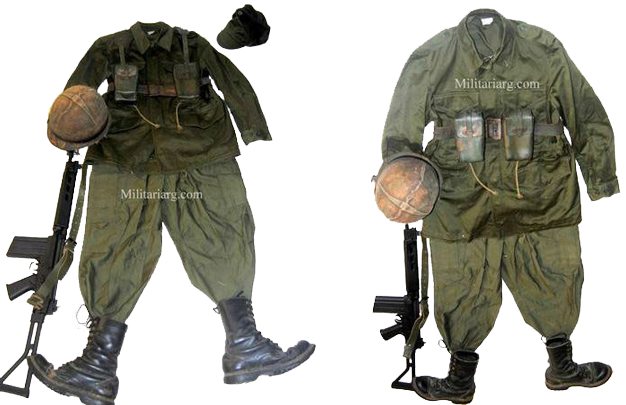
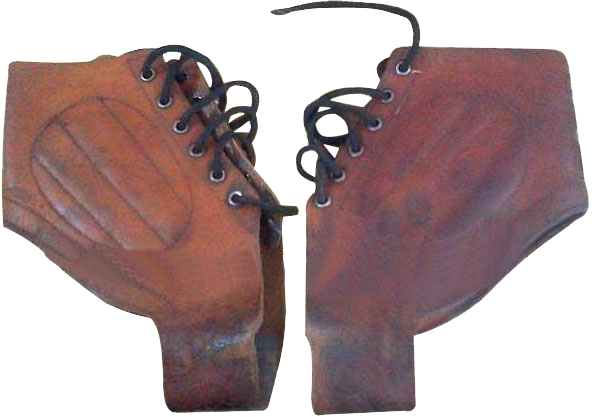
The Argentine paratroopers made use of quite interesting element of feet protection from injuries, sprains and bruises - a kind of gaiters to be worn over combat jump boots, and made of thick solid light-coloured leather. These gaiters are fixed on the ankles with the help of lacing system, consisting of six pairs of round eyelets. The malleolus bones of the feet are protected with soft pads, sewn on the both sides on the gaiters. 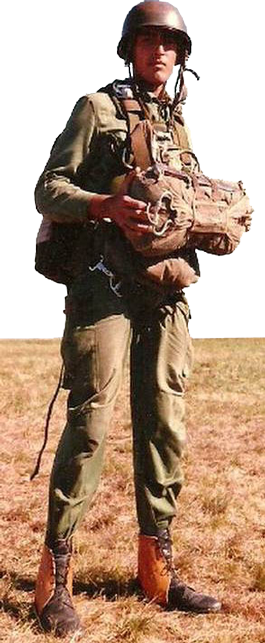
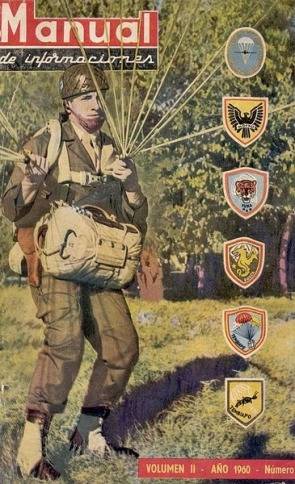
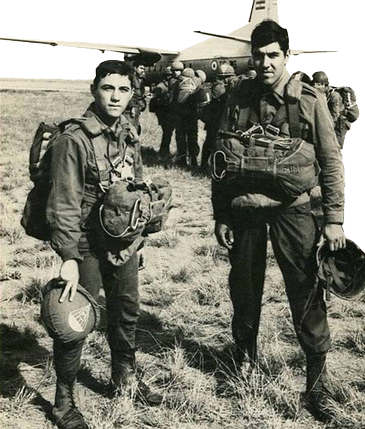
The standard Argentinian military boots, as well as in many other countries around the world, were introduced in the 1950s, at first in the airborne or engineer troops. This military footwear is conventionally referred to as Type 1 boots.
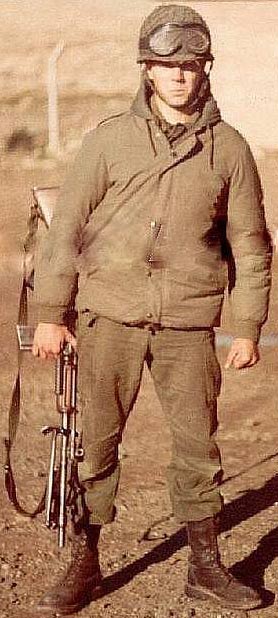
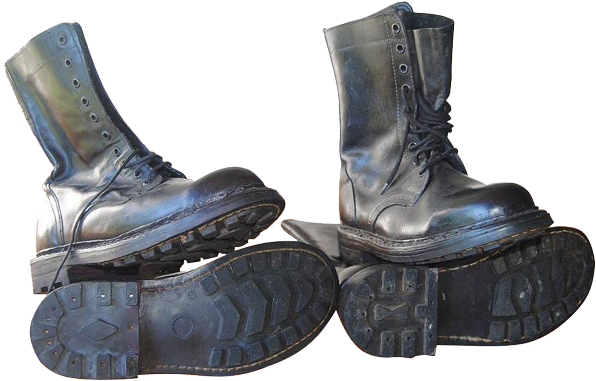
During the war for the Falkland/Malvinas Islands, the Argentine military boots featured standard out-soles with tread pattern, similar to the pattern of the French parachute boots ("Bottes de saut francaises Semelle"). Perhaps the tread pattern of Argentine army boots was actually modelled on those of the French boots, because on the Argentinian forums it is often called - the "French" type tread pattern.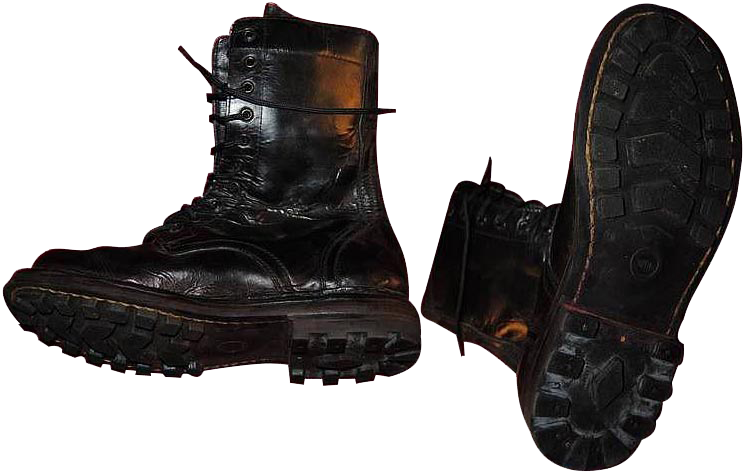
There are two types of the out-soles for such boots: the first type of which was intended for ceremonial march, being made of thick leather sole with metal horseshoes on the toes and heels, coupled with metal nails. Such design allowed to have the desired powerful sound during parades marching. The second type of out-soles are also made of leather, with glued and stitched-on protector of hard vulcanized rubber.
These boots are extremely strong and maintainable. Unlike the soldiers of most European armies, and especially of the US Army, the Argentine soldiers used to be provided the only one pair of boots. After demobilization the Argentinian soldiers were not allowed to pick up the boots with them, but they had to return the used boots back to the warehouse. After repair and/or resoling (if needed), the used army boots were issued to the new recruits. 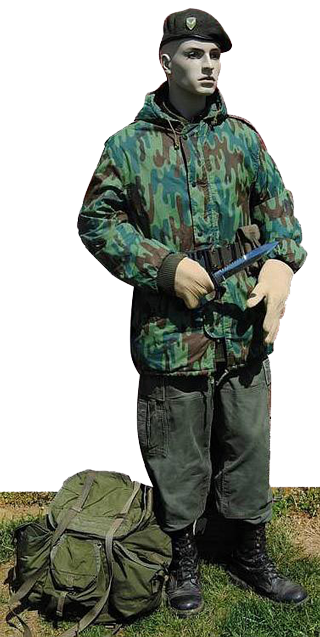
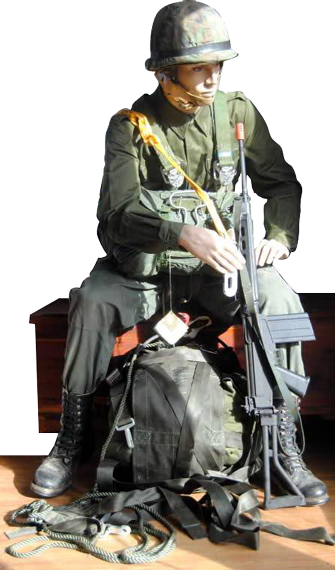
The Argentinian military boots were made of high quality materials, so they did not have a certain limited "life-term", as most modern army boots. During the Falklands/ Malvinas war in 1982, it were the Argentinian conscripts born in 1962 who were mainly used in the combat activities. According to the reminiscences of the Argentinian veterans of that war, many of them were issued the used boots, worn by their "predecessors" recruits throughout the previous year, 1981. Some boots, issued to the Argentine troops were made in the 1970s.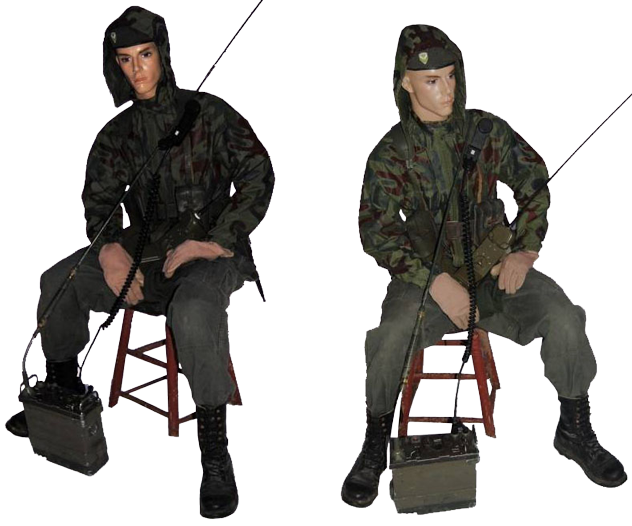
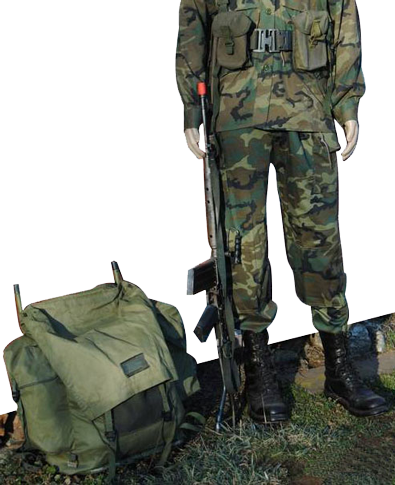
The Argentinian boots of the newer Type 2 are called "Borseguies". They were delivered to the greatest extent in the Argentine Marines troops and to the army officers, to a lesser extent - the recruits and junior commanders of army units. Similar to the contemporary Austrian or Danish boots, the lacing system of this type of boots consisted of five pairs of simple round eyelets at the bottom and of five pairs of lacing hooks at the top.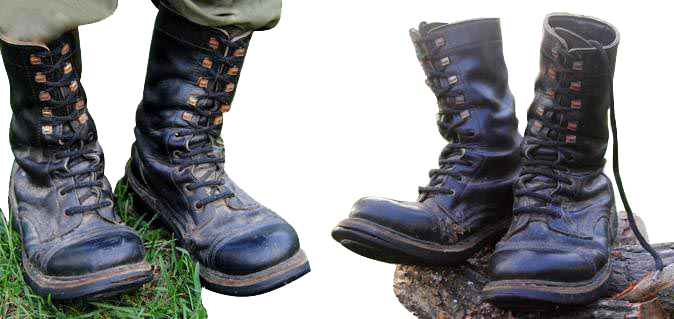
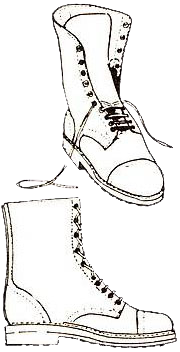
The toes of such boots are reinforced with additional leather patches. Except for this reinforcement and the hooks for lacing, most of all the Argentinian "Borseguies" boots are similar to the Belgian army boots, especially by the design of the out-soles: the thick leather out-soles with glued and stitched protector of solid vulcanized rubber.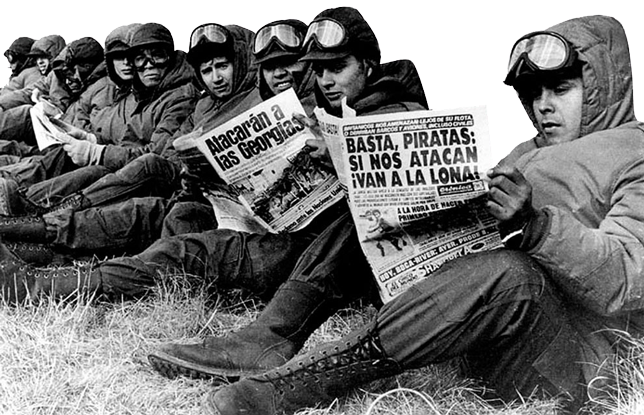
Boots Type 1 were the most common. Their lacing system consisted of 9 or 10 pairs of round eyelets, the toes had no additional leather patches.
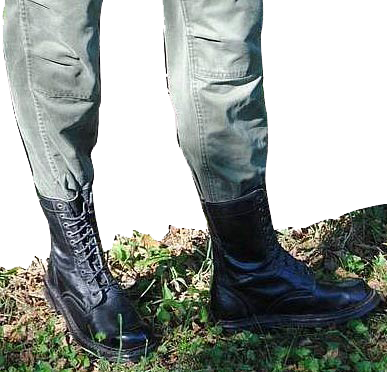
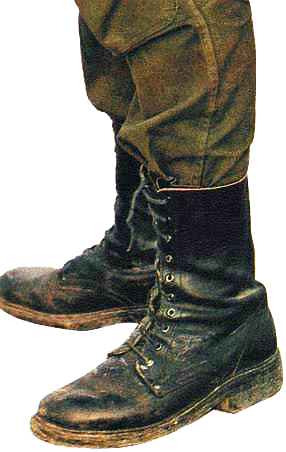
There was also a "female" version of the "Borseguie" military boots: they were similar to the male version, except for lacing - the hooks for lacing at the top were replaced with simple round eyelets.
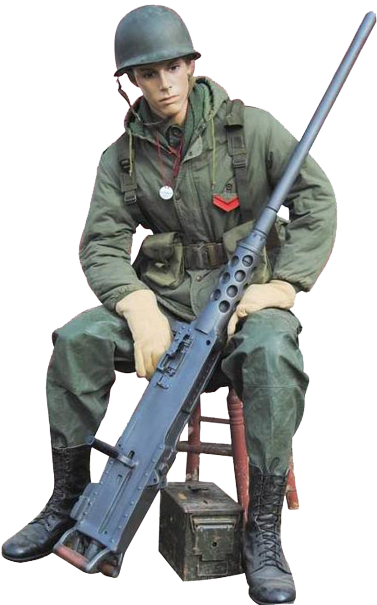
The Argentinian "women's" military boots were more tapered, narrow and apparently looked neater. During the Falklands/ Malvinas war the female personnel mostly consisted of medics and paramedics from ESCAF, the Auxiliary Women's Corps ("Escalafon Cuerpo Auxiliar Femenino" in Spanish). These ladies worked in hospitals, including the field ones, at the front. It should be noted that in those years, not all the progressive armies of the world used to have special boots for female staff. The British Armed Forces, for example, had no special footwear for women.
The marking of the Argentinian military boots can be seen both on the sole, and on a textile label, sewn inside the boots. On the sole the country of manufacture ("Industria Argentina"), the size, sometimes the logo and/or the name of the manufacturer were indicate. The sewn-on label showed the military markings ("Ejercito Argentino", that is, the Armed Forces of Argentina), the year of manufacture and the number of the military contract (for example, O/C I No 82-0267 or O/C I No 82-0008), the designation of the manufacturer (e.g., VICLA SA or CALZADOS ALFREDO SRL).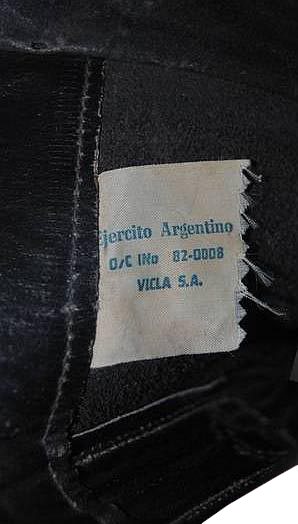
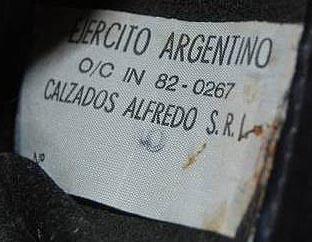

The tread patterns of the Argentinian military boots soles were easy to recognize and identify clearly the traces, as the British troops during the Falklands/Malvinas war used another type boots - the so-called DMS (Directly Moulded Sole) boots, to a lesser extent - the civil mountain boots manufactured by "Alpine" company.
The Swedish brown boots, rubberised in their bottom part, proved to be very good in damp and cold climate of the South Atlantic. The British DMS boots, on the other hand, proved to serve badly, they are often blamed on the forums by the British veterans of the Falklands War themselves.

There are also some mentions on the specialized forums, that some of the British soldiers preferred to replace their regular military boots on trophy Argentinian boots, which had better quality, if they managed to find such.
There are similar witnesses about the first Gulf War in 1991. The statutory boots, which were issued to the British troops in the initial stage of the operation, didn't survive the harsh climate conditions of the Iraqi desert - so the regular black boots just crumbled and the out-soles simply disintegrated. Therefore, some of the British had to use captured Iraqi boots.
Actually it is hard to say whether these allegations are true or not.
After the defeat in the conflict of 1982, the Argentinian military junta fell down. The victory of the UK strengthened the self-confidence of the British military, consolidated the nation in overcoming financial and economic problems, empowered the national pride and the international prestige of the country. It became clear that Britain was not a "decrepit lion", and it can stand up for themselves, including the use of the Armed Forces.

The UK fought for the Falklands/Malvinas not in vain. Except for the issues of reputation, strategic matters and defending the territory, these islands were extremely important in terms of energy. One of the British companies found huge oil resource offshore the archipelago, and in 2010 Britain began the piercing operations. The Argentinian protests led to strengthening the British military contingent and naval exercises in the area. By the way, both sides also claim the territory of the nearby Antarctica.
Argentina responds by creating obstacles to the passage of vessels under the British flag and began legal proceedings against five British oil companies that conduct geological exploration offshore the Falkland Islands. Cristina Kirchner, the Argentina's president, announced the return of the Malvinas Islands under the jurisdiction of Argentina, while adhering to relatively peaceful methods (at this stage) of this problem solving as the main task of the Argentinian foreign policy.
The sources of the photos and information:
http://army-news.ru
http://beta.inosmi.ru/images
http://bigpicture.ru
http://ir-ingr.livejournal.com
http://manger.ru
http://militariarg.com
http://mytripolog.com
http://photochronograph.ru
http://rebell91.livejournal.com
http://todanoticia.com
http://voprosik.net
Exclusively for cartalana.com
We have much more interesting information on this site.
Click MENU to check it out!
∎ cartalana.com© 2009-2025 ∎ mailto: cartalana@cartalana.com